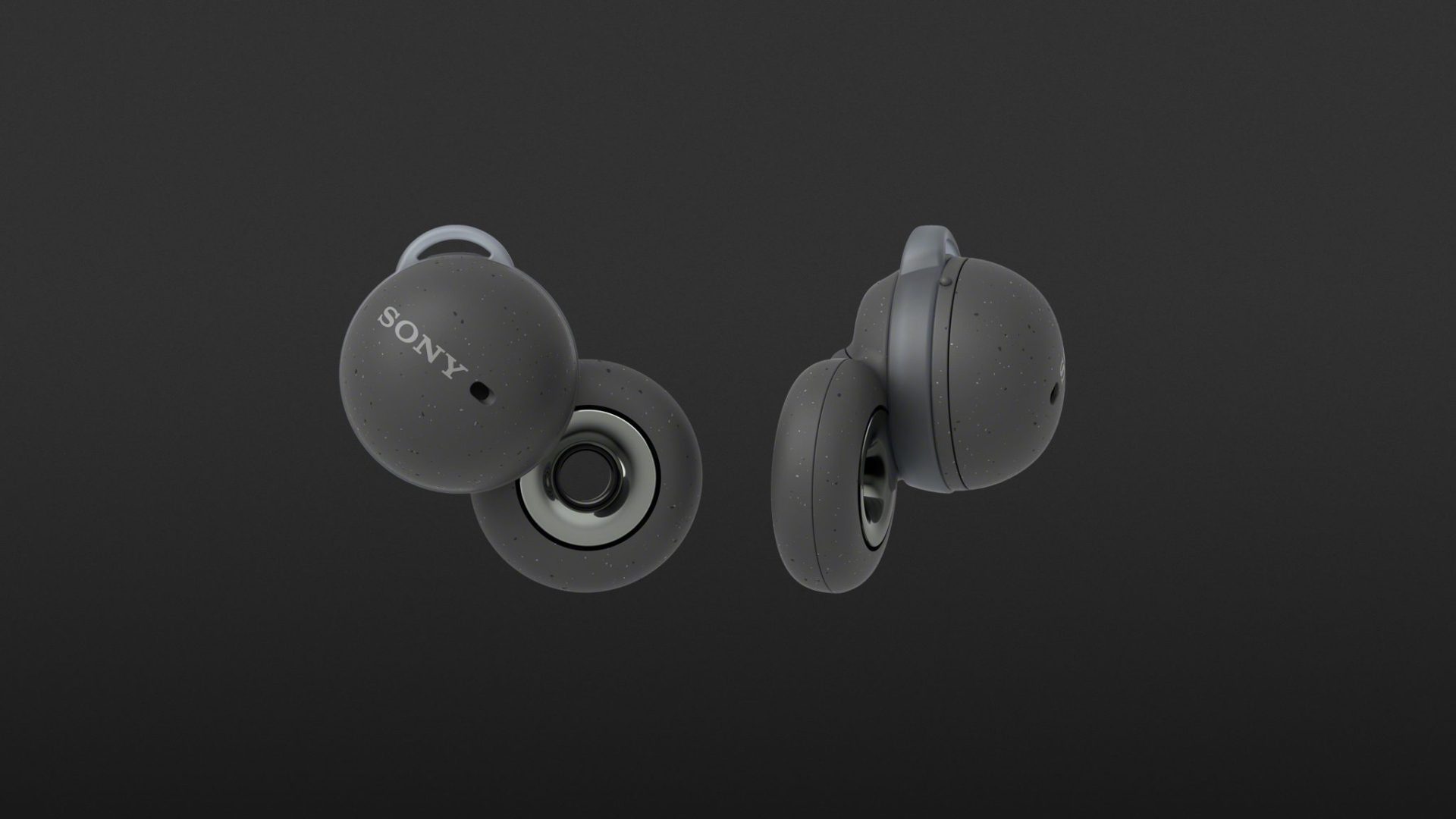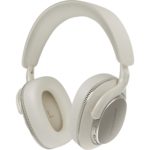The Sony LinkBuds WF-L900 show that True Wireless headphones are not always about sound quality alone. It will be clear to anyone in the know that the open design brings disadvantages in sound reproduction. However, Sony has also designed the LinkBuds as a solution for permanent wearing that makes direct exchange with the environment possible. Music, phone calls and conversations are supposed to go hand in hand. These are not headphones for sound connoisseurs.
Sony has been working for decades to integrate consumer electronics into everyday life in a meaningful way. As an innovator, the industry giant goes further in many areas than is usual for conventional electronics and thus achieves quite remarkable results. The perfect mechanism is still a long way off, and this is due partly to the technology but also to the expectations of the wearer. However, the direction seems to me to be the right one: headphones can actually be better integrated into everyday life with this model.
Sony is breaking new, thoroughly exciting ground with the LinkBuds WF-L900: smart True-Wireless headphones that aim to integrate themselves deeply into our everyday lives. With their open design and automatic functions, mere music consumption is only one aspect of the concept.
To date, it has been taken for granted that a pair of headphones would not remain in your ears for hours on end and would be removed from the ear when you’re not enjoying music or making the occasional phone call. With the LinkBuds WF-L900, Sony wants to change that right away.
The first striking feature is their unusual design. The feather-light dark grey or white true-wireless plastic design sits above the wearer’s ear canal. In front is a 12 mm ring resonator, whose central opening ensures contact with the outside world at all times. In the hollow above, there is a spherical housing containing the electronics, battery and microphone. To prevent it from slipping out of the ear, this element is equipped with a replaceable silicone fitting that hooks into a fold of the ear. This is as unusual as it sounds.
In fact, this mechanism works surprisingly well. Once the EarBuds are in the ears, you hardly notice that you are wearing headphones. The low level of external insulation is intentional; after all, you are supposed to remain in contact with the outside world at all times.
Bluetooth and battery life of the Sony LinkBuds
The LinkBuds feature Bluetooth 5.2, support for the SBC and AAC codecs and Sony’s DSEE sound optimisation. However, the really special feature is the device control: this offers touch-sensitive surfaces on the housings, but it also recognises pressure impulses on the skin – so-called “wide-range tapping” (see below).
The tried and tested, free “Headphones” app for iOS and Android is used to configure the device. This offers numerous comfort functions that are familiar from their use on other Sony headphone models, including the possibility of making firmware updates (status: 1.04).
Of course, a charging case with a USB-C connection and pressure lock is also included in the package; this is extremely compact but unfortunately does not support inductive charging. The use of recycled plastic for the headphones and case, as well as the plastic-free packaging, is praiseworthy.
The built-in battery offers up to 5.5 hours of music playback and eleven hours of stand-by, depending on the levels. The charging case adds another twelve hours of capacity. This means that the WF-L900s are not continuous runners, but they are certainly suitable for longish journeys. In addition, there is a quick-charge function that delivers up to 90 minutes of playtime in ten minutes.
Sony LinkBuds WF-L900 in practice
Once I’d got the hang of inserting the headphones and hooking the fitting pieces underneath, I found them to be comfortable and unobtrusive to wear. The WF-L900s sit without pressure in front of the ear and fit firmly enough to stay in place during faster walking and more brisk movements. To me, these IPX4 splash- and sweat-resistant EarBuds seemed suitable for basic use in the gym, but they would not be especially suitable for jogging.
Controls activated by tapping on the skin around and in front of the earlobe works quite reliably with a little practice. By providing only double- and triple-click functions, accidental triggers and annoying pulses on the eardrum are avoided; this is an interesting approach.
The functions themselves are configurable via the app. There is a choice of start/pause/call answer, track jump/reject calls, volume control and configurable voice assistants, including Google and Alexa. In addition, there are so-called quick services, among which only the direct link to a Spotify playlist could be found so far. Since simple and longer clicks are missing, a total of four control commands is possible: unfortunately, this is not quite enough for a combination of playback, track skipping and level control.
The Sony LinkBuds WF-L900 earn our praise for their self-imposed goal of always enabling a good exchange with the environment through their open design. Indeed, there was an unusual level of comfort. With the music paused or turned down, a conversation was comfortable. Of course, it was still necessary to turn off loud music for conversations. The aforementioned touch control was sufficient for this. And if you take the earpiece out of your ear, music playback can also be paused automatically if necessary.
An even more convenient feature was the chat-to-speak function, which recognises when you start to speak, pauses the music and activates it again after a selectable pause. This was great in principle and usually worked quite reliably. However, a cough can also trigger this automatic function.
Other automatic functions include switchable adaptive volume control that responds comparatively quickly to the level of the environment, as well as a possible switch-off when the volume is reduced and during longer rest periods.
The status tones and multilingual voice guidance can be switched off via the app. The separate player front-end for controlling music is also located there. A convenient 5-band graphic equaliser with supplementary clear bass function, pre-sets and two user-defined memory locations are included.
The Sony LinkBuds WF-L900 support Fast Pair from Google and Swift Pair for Windows 10/11; once paired, the earpieces connected quickly and reliably when inserted. The connection to a smartphone was mostly stable but had a rather limited range.
Sony has great ambitions when it comes to voice quality, which, according to them, is supposed to deliver good speech intelligibility even in noisy environments via an AI algorithm and noise suppression. In practice, this was only partially successful. For good intelligibility on my side, the level had to be turned up quite a bit. For the person on the other end of the call, the open design turned out to be quite susceptible to wind noise, and this often occurred, especially when walking fast.
Finally, Sony offers an unspecified optimisation for the format “360 Reality Audio” in the app. Corresponding files from Deezer or Tidal actually achieved a strongly enhanced spatiality. However, all headphones basically support the playback of correspondingly encoded files.
What I found remarkable here was the support for the Microsoft app “Soundscape” (go to the website for more detailed information) which was not available for iOS. This is a navigation aid that allows personalised route guidance with its own “support points”. Three-dimensionally located announcements of the support points not only provide practical support for visually impaired people but also support the creation of so-called mental maps.
Sound of the Sony LinkBuds WF-L900
At this point, you should check your sonic expectations within the framework of the concept defined by Sony. Sony deliberately uses an open True-Wireless design. Typical headphones usually offer a black-and-white decision: music on, environment off or, if possible, the environment only. That is not the case here. Without overstating it, the Sony LinkBuds WF-L900 assume the role of a sound system in mobile mode. This need not be a disadvantage because the focus was not always on the sound quality and intensity of the music. Instead, you might simply want a pleasant backdrop, for example, on the bus or when going for a walk.
The Sony LinkBuds WF-L900 sounded quite appealing in this setting, at a medium level. Sony’s built-in ring drivers have DSP support, but the design has an underrepresented bass component. Figuratively speaking, the lower two floors are missing. Although the sound is by no means unbalanced, a feeling of pressure only kicks in at higher volumes. It’s a pity that the level reserves are rather low and that the person sitting next to you can hear what’s going on.
Midrange and treble do not have these deficits, and so I still found the overall sound picture to be coherent and even pleasing.
At the same time, it has to be said that one should not apply higher or even audiophile standards here. The results were quite appealing in quiet surroundings, at home or in the office, as long as you are content with the reduced bass, which cannot be teased out of these headphones even with the app’s Clear Bass function.
The stereo panorama was broad, but dynamics and fine details were rather underrepresented.
The built-in technology DSEE (Digital Sound Enhancement Engine) to compensate for sound loss from compressed sound files is also on board in the WF-L900s. I let it work automatically in the test. However, I did not notice any differences in the sound.
Technical specifications
- Ear couplingEarbuds
- Typeopen
- Transducer principledynamic
- Frequency response (headphones)20 - 20.000 Hz
- Weight without cable4.2 g each, case: 34 g
What's in the box
- Silicone ear hooks in 5 sizes
- USB-C charging cable
- Charging case
Special features
- Available in dark grey and white
- BT codecs: SBC, AAC
- BT version: 5.2
- BT profiles: A2DP, AVRCP, HFP, HSP














































